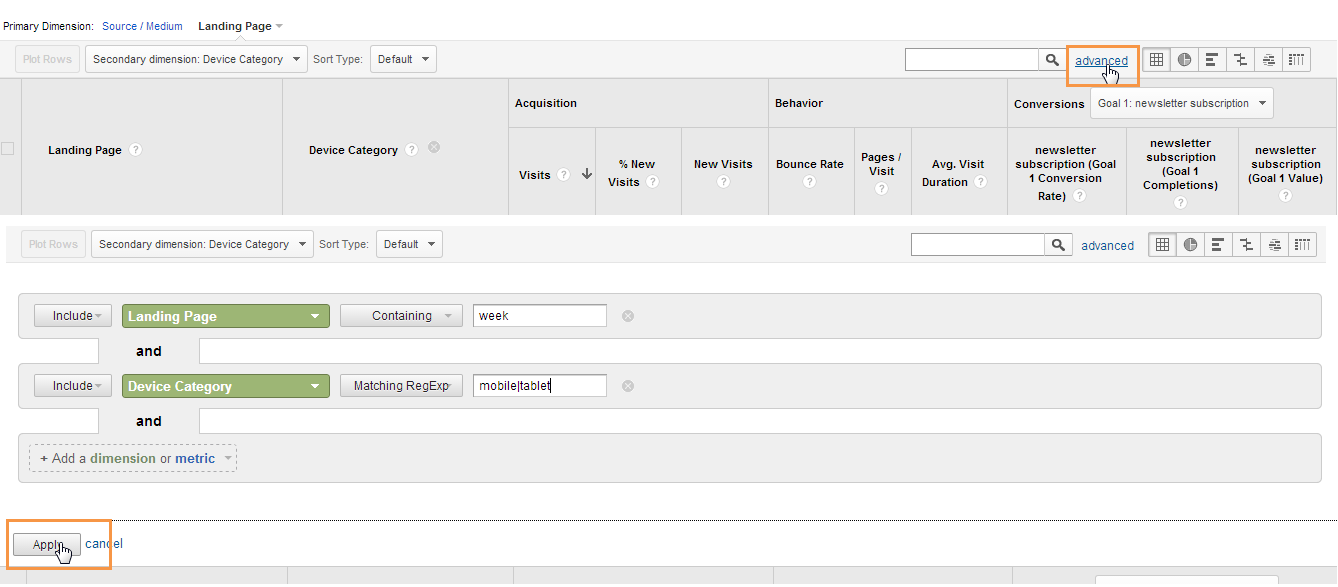Enhance Your Metrics: Understanding Google Analytics Secondary Dimension
Enhance Your Metrics: Understanding Google Analytics Secondary Dimension
Blog Article
Unlocking the Power of Additional Measurement Analytics for Improved Information Insights and Decision-Making
In the realm of data analytics, primary measurements usually take the limelight, yet the real depth of insights exists within the world of additional dimensions. By utilizing the power of secondary measurement analytics, companies can reveal covert trends, reveal connections, and remove a lot more significant final thoughts from their data.
Value of Second Dimensions
Exploring the value of second measurements in analytics introduces the hidden layers of data insights critical for informed decision-making in various domain names. Secondary dimensions give a much deeper understanding of primary information by supplying additional context and perspectives. By integrating secondary dimensions right into analytics, companies can extract extra nuanced and thorough understandings from their datasets.
One trick significance of second dimensions is their capacity to section and categorize key data, permitting a much more detailed analysis of details subsets within a dataset. When looking at the information as a whole, this division enables services to recognize patterns, trends, and outliers that may not be apparent. Secondary dimensions assist in revealing correlations and dependencies between various variables, leading to even more exact projecting and predictive modeling - secondary dimension.
Additionally, second measurements play an important function in boosting information visualization and coverage. By including secondary dimensions to visualizations, such as charts or graphs, analysts can produce a lot more informative and informative representations of data, helping with much better interaction of searchings for to stakeholders. On the whole, the assimilation of second measurements in analytics is important in unlocking the full capacity of information and driving evidence-based decision-making.
Trick Advantages of Using Second Measurements
Using additional dimensions in analytics provides organizations a calculated advantage by enhancing the depth and granularity of data understandings. One vital benefit of integrating secondary dimensions is the capability to sector and filter information, permitting a much more detailed evaluation of details aspects within a dataset. This division makes it possible for organizations to obtain an extra nuanced understanding of their audience, efficiency metrics, and other important data factors. By exploring information utilizing secondary dimensions such as time, area, gadget kind, or individual demographics, organizations can uncover patterns, fads, and connections that may or else stay covert.
Furthermore, the usage of second dimensions boosts the context in which main information is interpreted. It supplies a more detailed sight of the relationships in between various variables, allowing companies to make informed decisions based upon a more alternative understanding of their information. Additionally, additional measurements facilitate the identification of outliers, abnormalities, and locations for optimization, ultimately resulting in extra effective techniques and boosted end results. By leveraging secondary dimensions in analytics, companies can harness the complete possibility of their data to drive better decision-making and accomplish their organization purposes.
Advanced Data Analysis Techniques
A deep study advanced data analysis techniques reveals sophisticated techniques for drawing out important insights from complicated datasets. One such method is device knowing, where algorithms are employed to identify patterns within data, predict end results, and make data-driven choices. This approach permits the automation of logical design building, enabling the handling of huge quantities of data at a quicker pace than traditional approaches.
An additional innovative method is predictive analytics, which uses analytical formulas and device knowing techniques to anticipate future results based on historic information. By evaluating patterns and fads, services can expect customer actions, market patterns, and potential threats, equipping them to make proactive choices.
Moreover, text mining and view analysis are valuable strategies for drawing out understandings from disorganized data resources such as social networks remarks, consumer reviews, and study feedbacks. By assessing message data, companies can comprehend client point of views, determine arising trends, and enhance their items or solutions based on comments.
Enhancing Decision-Making With Additional Dimensions

Enhancing decision-making via secondary dimensions makes it possible for businesses to make more educated and targeted strategic choices. For instance, by segmenting consumer information based on secondary dimensions like buying background or involvement levels, companies can tailor their advertising approaches to specific audience segments, causing enhanced conversion prices and consumer satisfaction. Additional dimensions can help identify correlations and partnerships in between different variables, enabling organizations to make data-driven choices that drive development and success.
Executing Secondary Measurement Analytics
When including additional measurements in analytics, organizations can unlock other much deeper insights that drive critical decision-making and enhance overall performance. This entails recognizing the specific concerns the organization seeks to answer and the data factors called for to address them.

Furthermore, organizations must leverage advanced analytics devices and modern technologies to improve the procedure of including secondary dimensions. These tools can automate information handling, evaluation, and visualization, allowing organizations to concentrate on analyzing insights as opposed to hands-on information adjustment.
Conclusion
In verdict, second measurement analytics play a critical duty in improving data insights and decision-making processes. By making use of Recommended Site innovative information analysis techniques and implementing secondary measurements successfully, organizations can unlock the power of their information to drive critical service decisions.
In the realm of information analytics, main dimensions frequently take the limelight, yet the true depth of understandings lies within the realm of second dimensions.Utilizing second dimensions in analytics offers companies a calculated advantage by augmenting the deepness and granularity of data understandings. By leveraging additional dimensions in analytics, companies can harness the full possibility of their data to drive far better decision-making and accomplish their company purposes.
Carrying out data recognition processes and routine audits can help keep data top quality and dependability.
By making use of sophisticated information analysis strategies and executing second dimensions properly, organizations can open the power of their data to drive calculated business choices.
Report this page